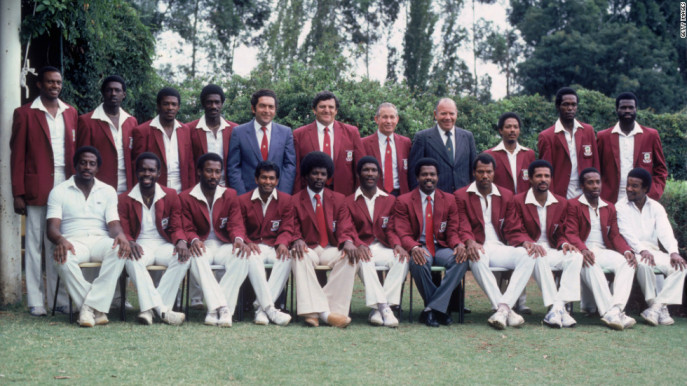The mere mention of West Indies cricket conjures images of fearless fast bowlers steaming in under the Caribbean sun, flamboyant batsmen carving boundaries with swagger, and a dominance that shook the cricketing world. From the golden era of the 1970s and 80s, when they were virtually unbeatable, to the challenges of the modern landscape, West Indies cricket remains one of the sport’s most captivating stories.
But this is more than just cricket. For the Caribbean, it is a cultural phenomenon that unites a diverse region, instills pride, and inspires generations. To understand today’s struggles and hopes, we must revisit the power of its legacy — and the road to revival.
The Golden Era: Fear, Flair, and Total Dominance
The rise of West Indies cricket in the 1970s was a sporting revolution. Under Clive Lloyd’s captaincy, the team forged a new identity: fast, fearless, and unapologetically Caribbean.
Their blueprint was simple yet devastating — bowl fast, hit hard, and never back down. Michael Holding, Andy Roberts, Joel Garner, and Malcolm Marshall formed a pace attack so intimidating that opposing batsmen often spoke of dread before the first ball was bowled. At the other end, Viv Richards swaggered to the crease, Gordon Greenidge and Desmond Haynes laid ironclad foundations, and Lloyd himself provided leadership and firepower in the middle order.
This combination produced a dynasty. Between 1982 and 1995, the West Indies went unbeaten in 29 Test series — a record that still stands. In ODIs, they lifted the first two Cricket World Cups in 1975 and 1979, cementing their place as global giants.
Cultural Impact: More Than Just a Game
Victories on the field translated into unity across the Caribbean. For nations emerging from colonialism, every win carried deeper meaning: it was the islands against the world. Their style of play — fearless, flamboyant, joyful — wasn’t just cricket; it was identity.
Around the globe, fans tuned in not just to watch a team win, but to witness a spectacle. The West Indies became cricket’s entertainers and enforcers rolled into one, redefining the sport’s rhythm and appeal.
Pillars of Excellence: The Icons Who Defined an Era
The Terrors of Pace
- Andy Roberts: The pioneer of aggression, showing what West Indian quicks could become.
- Michael Holding (“Whispering Death”): Effortless stride, searing pace, pure elegance.
- Joel Garner (“Big Joel”): At 6’8”, his yorkers were nearly unplayable.
- Malcolm Marshall: A master craftsman, widely hailed as the finest fast bowler of them all.
- Courtney Walsh: Relentless and consistent, one of the great survivors.
- Curtly Ambrose: Towering, ruthless, and capable of destroying batting orders in a single spell.
The Master Batsmen
- Viv Richards: The “Master Blaster,” fearless and dominant, redefining batting swagger.
- Clive Lloyd: The captain who led with vision and middle-order firepower.
- Gordon Greenidge & Desmond Haynes: The opening duo who gave solidity and aggression in equal measure.
- Brian Lara: A modern genius, holder of cricket’s highest individual Test score (400*), whose artistry kept the Caribbean flame alive long after the golden age.
The All-rounders and Spinners
- Sir Garfield Sobers: Often called the greatest cricketer ever — able to bat like a king, bowl pace or spin, and field like no other.
- Lance Gibbs: The off-spinner who added guile to West Indies’ firepower.
These legends didn’t just play cricket — they set standards the world still measures against.
The Fall: Modern Challenges and Shifting Fortunes
When the golden era faded, cracks began to show. Several factors fueled the decline:
- Player exodus to T20 leagues: The lure of global franchise cricket often outweighs national duty, weakening Test and ODI squads.
- Administrative struggles: Governance issues within Cricket West Indies (CWI) have hampered development and planning.
- Broken pathways: Grassroots and youth systems failed to consistently produce players ready for the highest level.
The result? Once feared in Tests, the West Indies slipped to mid-table mediocrity. In ODIs, inconsistency became the norm.
Yet, in the T20 format, Caribbean flair found a new home. West Indies became the first team to win two T20 World Cups (2012 and 2016), reminding the world of their natural power. But even this success raised questions: was cricket becoming entertainment over discipline?
The Road to Revival
Despite setbacks, hope burns bright. Efforts are underway to reclaim glory:
- Grassroots Development: Regional academies, stronger school competitions, and structured coaching are nurturing talent from the ground up.
- Player Welfare & Management: Recognizing the mental and physical demands of the modern game, new systems aim to keep players motivated and available.
- Fan & Diaspora Engagement: The Caribbean diaspora worldwide remains passionate. Strengthening these bonds could boost both finances and morale.
The building blocks are being laid. Stars like Shai Hope, Nicholas Pooran, and Jason Holder represent a generation determined to carry the legacy forward.
Conclusion: Spirit Unbroken
West Indies cricket is more than a memory of dominance; it’s a living, breathing spirit. From Sobers to Lara, from Holding’s thunderbolts to Richards’ swagger, the Caribbean has given the game its soul.
The golden era may be gone, but the dream of revival is alive. With investment, unity, and belief, the West Indies can rise again. For cricket fans everywhere, that’s a future worth hoping for — because when the men in maroon are at their best, the game itself feels richer.
The heartbeat of Caribbean cricket still pounds. The world is waiting for its next great chapter.





